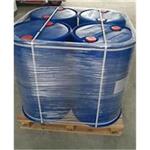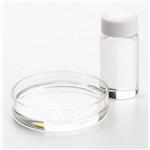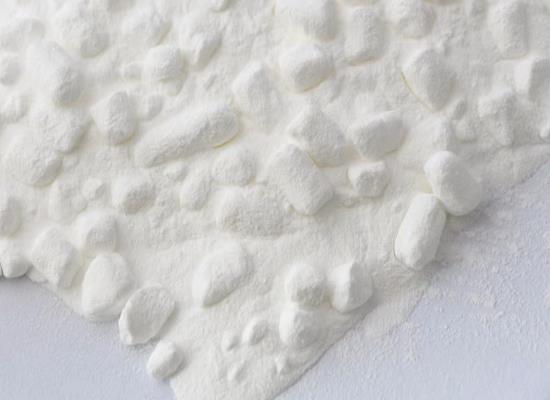Nonanoic Acid: Mechanism of Action, Therapeutic Uses and Toxicity
Oct 9,2024
General Description
Nonanoic acid is a medium-chain fatty acid that demonstrates significant biological activity across various applications. In the epidermis, it alters the sodium/potassium ratio, indicating changes in cell membrane integrity and enhancing the inflammatory response by elevating interleukin-6 expression. Additionally, nonanoic acid promotes neuronal differentiation, supporting neurite growth in specific cell lines. Its therapeutic potential is particularly noted in metabolic disorders linked to mitochondrial beta-oxidation, where it helps reduce toxic long-chain metabolite accumulation. Although nonanoic acid exhibits low toxicity levels and is generally considered safe, its irritant properties must be acknowledged, particularly at higher concentrations.

Figure 1. Nonanoic acid
Mechanism of Action
Epidermal Response
Nonanoic acid plays a significant role in the epidermal response to irritants, particularly through its interaction with cellular and molecular components of skin. When applied to the skin, nonanoic acid induces a notable change in the sodium/potassium ratio, which indicates alterations in cell membrane integrity and functionality. Research indicates that after exposure to nonanoic acid for a duration of six hours, there is a significant increase in the sodium/potassium ratio compared to unexposed skin. This suggests a potential disruption in cellular homeostasis and could be indicative of cell injury. Furthermore, nonanoic acid uniquely influences the expression of various cytokines in the epidermis, differing from other irritants such as sodium lauryl sulfate. Notably, nonanoic acid elevates the mRNA expression of interleukin-6, highlighting its role in modulating the inflammatory response during initial exposure. 1
Neuronal Differentiation
In addition to its effects on the epidermis, nonanoic acid also exhibits properties that promote neuronal differentiation. Studies have shown that straight medium-chain fatty acids, including nonanoic acid, facilitate the growth of neurite processes in specific neuronal cell lines, such as PC12 cells. When nonanoic acid is administered at millimolar concentrations, it can induce significant neuronal differentiation, albeit with varied efficacy compared to other fatty acids. The presence of nonanoic acid alone can lead to enhanced neurite extension, suggesting its potential therapeutic role in neurodevelopmental applications. Moreover, the mechanistic actions of nonanoic acid in supporting neurite growth highlight its dual functionality in both epidermal responses and neuronal processes, further emphasizing its biological importance. Its unique effects on cytokine expression and neuronal growth underscore the diverse implications of nonanoic acid in cellular physiology. 1
Therapeutic Uses
Nonanoic acid has garnered attention for its potential therapeutic uses, particularly in the context of metabolic disorders related to mitochondrial long-chain fatty acid beta-oxidation. Patients with genetic disorders often face challenges in energy production, necessitating dietary interventions to ensure adequate energy sources for growth and development. One standard approach involves the use of medium-chain triglycerides, which typically consist of even-chain fatty acids like octanoate and decanoate. However, nonanoic acid, as an odd-chain fatty acid, presents a promising alternative. Research indicates that nonanoic acid can help reduce the accumulation of toxic long-chain metabolites resulting from fatty acid oxidation. While odd-chain fatty acids may not be as effective as their even-chain counterparts, they still play a significant role in mitigating metabolic disturbances. By incorporating nonanoic acid into dietary regimens, it may be possible to bypass metabolic blocks and support normal cellular function. This therapeutic application highlights the importance of nonanoic acid in addressing energy deficits and preventing adverse effects associated with metabolic decompensation, thereby contributing to the overall management of patients with mitochondrial disorders. The unique properties of nonanoic acid make it an important consideration in the development of dietary therapies for these conditions. 1
Toxicity
Nonanoic acid, similar to pelargonic acid, has been assessed for its toxicological profile, indicating a low risk for mammalian toxicity. Toxicity studies suggest that nonanoic acid is unlikely to exhibit genotoxic effects, and it demonstrates low acute toxicity, with a no-observed-adverse-effect level of 1,000 milligrams per kilogram body weight per day in rodent studies. While specific long-term and reproductive toxicity studies for nonanoic acid are not extensively documented, its classification as a food-grade quality substance supports its safety for consumption. Additionally, the principal concern regarding the toxicity of nonanoic acid lies in its potential irritant properties, which can vary depending on the fatty acid chain length, including nonanoic acid itself. This evidence indicates that while nonanoic acid is generally regarded as safe for use in food applications, it is important to remain aware of its irritative qualities, particularly in higher concentrations or specific formulations. 2
Reference
1. National Center for Biotechnology Information (2024). PubChem Compound Summary for CID 8158, Nonanoic acid.
2. European Food Safety Authority (EFSA); Alvarez F, Arena M, Auteri D, Borroto J, Brancato A, Carrasco Cabrera L, Castoldi AF, Chiusolo A, Colagiorgi A, Colas M, Crivellente F, De Lentdecker C, Egsmose M, Fait G, Gouliarmou V, Ferilli F, Greco L, Ippolito A, Istace F, Jarrah S, Kardassi D, Kienzler A, Leuschner R, Lava R, Linguadoca A, Lythgo C, Magrans O, Mangas I, Miron I, Molnar T, Padovani L, Parra Morte JM, Pedersen R, Reich H, Santos M, Sharp R, Szentes C, Terron A, Tiramani M, Vagenende B, Villamar-Bouza L. Peer review of the pesticide risk assessment of the active substance pelargonic acid (nonanoic acid). EFSA J. 2021 Aug 23; 19(8): e06813.
- Related articles
- Related Qustion
Polyacrylonitrile is a versatile polymer essential for ion exchange resins, heavy metal extraction, and environmental remediation due to its exceptional properties and adaptability.....
Oct 9,2024API2-Chloroethylamine hydrochloride is an organic salt compound used primarily in organic synthesis, but also as an intermediate in active pharmaceutical ingredients and dyes.....
Oct 9,2024APINonanoic acid
112-05-0You may like
- Nonanoic Acid
-

- $6.60 / 1KG
- 2024-10-09
- CAS:112-05-0
- Min. Order: 1KG
- Purity: 99%
- Supply Ability: 5000kg
- Nonanoic acid
-

- $6.00 / 1kg
- 2024-10-09
- CAS:112-05-0
- Min. Order: 1kg
- Purity: 99%
- Supply Ability: 2000KG/Month
- Nonanoic acid
-

- $6.90/ kg
- 2024-10-08
- CAS:112-05-0
- Min. Order: 1kg
- Purity: 99%
- Supply Ability: 10 tons






